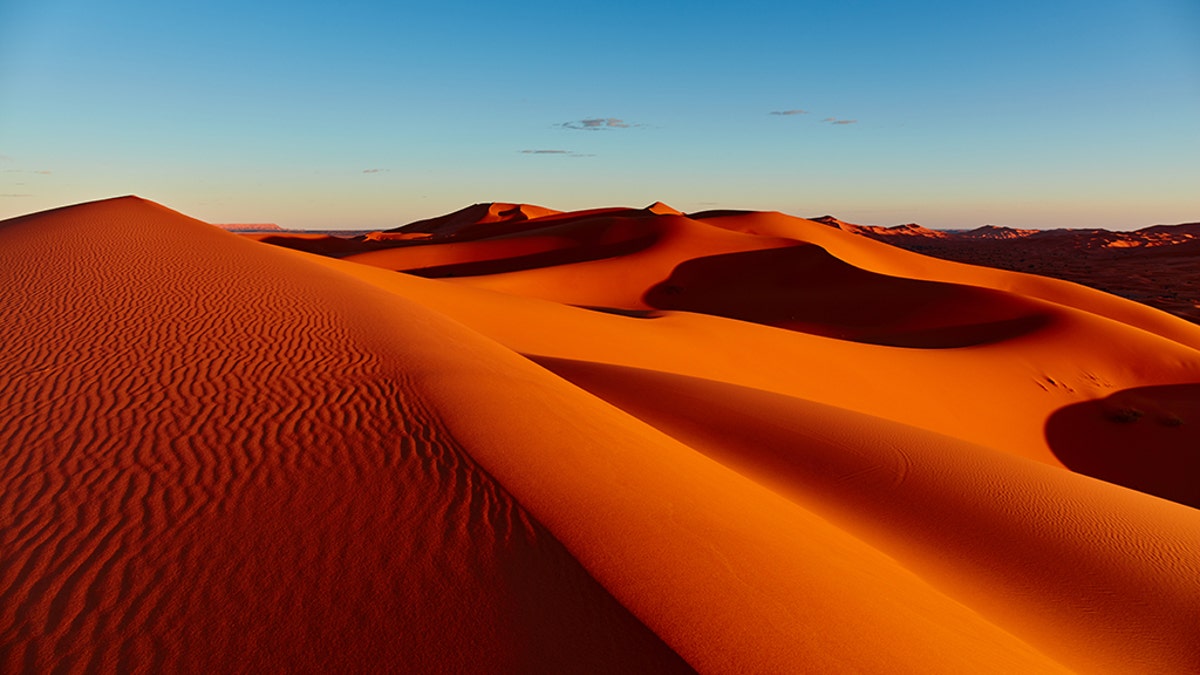
Sand dunes in the Sahara Desert, Merzouga, Morocco. (Credit: iStock) (This content is subject to copyright.)
Going green could make the Sahara Desert…go green.
The world’s largest hot desert — with a scant population, strong winds and unobstructed exposure to the sun — is an idyllic landscape for generating renewable energy, according to new research.
Scientists have been studying how to effectively turn this potentially endless generator into a global port of power for some time now. The Sahara Solar Breeder Project, for example, is hoping to power half the world by 2050 with solar panel farms from the desert.
Although wind and solar farms are known to affect a region’s heat and humidity, the environmental impact that such projects would have on the desert itself have been largely overlooked. But a new study published in the journal Sciencereveals that not only could these plants literally run the world, they could also transform the Sahara for the better.
Researchers developed climate models based on the temperature, precipitation and vegetation changes that would occur if the entirety of the Sahara – 3,500,000 square miles – was covered with solar and wind farms. A project this size could create up to 79 terawatts of electrical power – four times the 18 terawatts the world used in 2017, according to the study.
“We found that the large-scale installation of solar and wind farms can bring more rainfall and promote vegetation growth in these regions,” Eugenia Kalnay, one of the co-authors of the paper, told the University of Illinois. Specifically, it could double the Sahara’s, and neighboring Sahel’s, precipitation and help increase vegetation by 20 percent, research showed.
“The rainfall increase is a consequence of complex land-atmosphere interactions that occur because solar panels and wind turbines create rougher and darker land surfaces,” said Kalnay.
Wind turbines would pull warmer air down to the surface while the solar panels help to reduce surface reflectiveness, both of which are known to increase rainfall, the study explained, turning the arid landscape into a global mean, green, renewable machine.
“The increase in rainfall and vegetation, combined with clean electricity as a result of solar and wind energy, could help agriculture, economic development and social well-being in the Sahara, Sahel, Middle East and other nearby regions,” Safa Motesharrei, another one of the study’s co-authors, told the University of Illinois.
This story originally appeared in the New York Post.




















